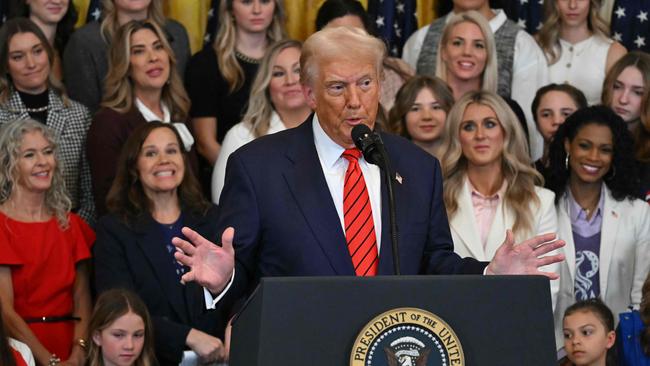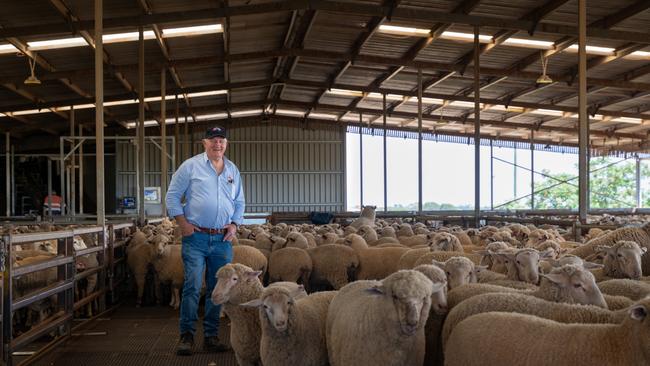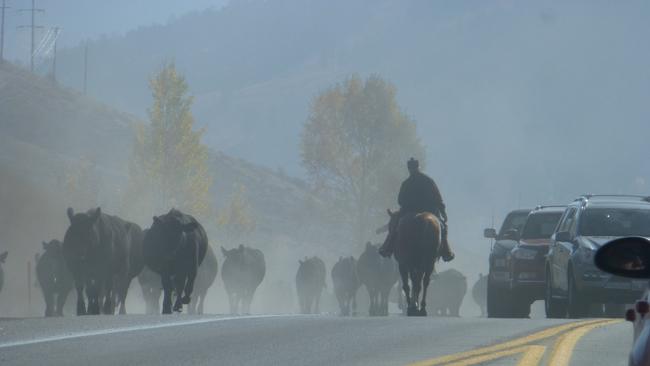Roger Fletcher says he “doubts” a tariff would be imposed on Australian red meat
Major US lobby groups are calling for Trump to put tariffs on Australian red meat. So, how likely is it? We ask the experts.
Cattle and sheep producers in the US are calling on President Donald Trump to impose tariffs on Australian red meat imports.
Major US farm lobby groups are blaming Australia’s exports for limiting their domestic production capacity.
However, industry experts believe the chances of a direct tariff is unlikely.
Lobby group R-Calf USA – which describes itself as the largest body representing producers of cattle and sheep in the US – is seeking the Trump administration to “enact tariffs and tariff rate quotas to level the playing field in the trade of cattle, beef, sheep and lamb”.
In a weekly address sent to members, R-Calf USA chief executive Bill Bullard said Australia, Brazil and Canada “and several more (countries) maintain huge trade surpluses with the United States and, as a result, we are limiting our domestic cattle and sheep producers’ ability to rebuild their herds and to otherwise grow our domestic beef and lamb production capacity”.
“The solution is to impose tariffs and tariff rate quotas on these countries to ensure they cannot continually displace our domestic production capacity, which is contributing to the decline of our domestic cattle- and sheep-producing farms and ranches,” he said.

The official Meat and Livestock Australia statistics show Australian exported 394,715 tonnes of beef to the US in 2024, up 60 per cent on 2023, while the US was Australia’s largest market for lamb at 85,133 tonnes.
In comparison the US imported 657 million pounds of beef (298,010 tonnes) from Brazil and 924 million pounds (419,119 tonnes) of beef from Canada.
Meanwhile, American Sheep Industry president Brad Boner wrote in his most recent newsletter that, since President Trump’s win, he has had multiple calls or emails from sheep producers asking what they plan to do about imported lamb “because of Trump’s strong stance on tariffs”.
Mr Boner wrote that, with the big jump in imported lamb to the US in 2024, “ASI will be bringing this to the attention of the Trump transition team”.
He said for the US sheep industry to maintain its market share, a 21 per cent tariff on lamb imports would be needed.
Red meat processor Roger Fletcher of Fletchers International at Dubbo, NSW, said they had trade challenges every day and if any tariffs were placed on Australia’s red meat “we will manage around it”.
“Why would Trump want to put a tariff on us – we are a net importer, we have a strong alliance with the US? I’m not saying it isn’t possible, but I doubt it will happen,” Mr Fletcher said.
“We’ve done a lot of work to get diverse products into markets all over the world. Even if a tariff was put on us, we have to go with it.”

Mecardo market analyst Angus Brown said a tariff would be unlikely as Australian lamb, beef or sheep meat was “filling the gaps” the US industry couldn’t supply.
“Slaughter lamb in the US is worth A$13/kg carcass weight at the moment, Australian lamb is a lot cheaper, so imports are not depressing the US prices or market,” Mr Brown said.
“The US has a sheep flock of about five million head, which is much smaller than Australia’s, so our product really fills the gaps in supply for them.
“If a tariff was imposed it would impact the consumer price of Australian lamb.”
Mr Brown said the US still had not started rebuilding its beef herd after years of drought, so Australian beef was also filling the gap.
“A tariff would have a negative effect on the export price, but we are mostly supplying lean beef which the US can’t supply anyway.”
More Coverage






